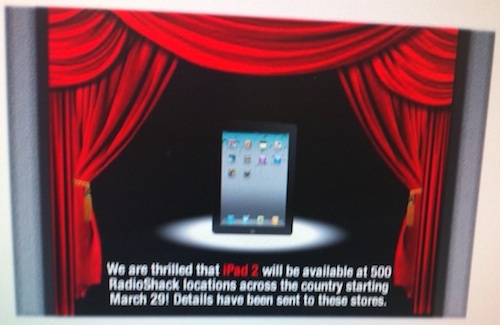For some of us, using a cellphone instead of a landline is awesome. No extra bill, just one phone that's always on you, and all that jazz. Then there's me, and maybe a bunch of you. I can't get a damn call to go through on any carrier from my home office. Verizon, AT&T, Sprint, T-Mobile, Alltel...nothing works. Ten steps away from the tiny radius and behold! I can make a call on all of 0-1 bars. Then last week two things happened: T-Mobile sent over the Samsung Galaxy S 4G which supports calls over Wi-Fi, and AT&T offered me a free Microcell for being a customer for over three years.
Both offerings sound like a godsend. A free service and a free box to stream calls through my internet? Sweet! Before you say "why not just use Skype?" know that I can, have, and it's just not convenient. I spend $80/month for my iPhone on the bare minimum plan, and hell, I'd better be able to use those minutes. I can use other VoIP services, but they cost money and don't work with my phone plan. All I need, and all many of us want, is literally
one phone: our cellphone. Thus, AT&T's Microcell and T-Mobile's Wi-Fi calling.
AT&T Microcell ($199, free to some customers)
The AT&T Microcell is a small tower that, according to the box, offers 5,000 square feet of coverage using your current internet connection. Like many others, I got a letter in the mail with a thank you card praising my choice in staying with AT&T, and telling me to go collect my prize for sticking with the company. After reading the legal mumbo-jumbo, the deal is surprisingly great for customers: get the Microcell for free and keep it for as long as you want without paying. Once a year is up, it's officially your property. If you switch carriers or don't renew your contract before a year is up, you'll have to return the Microcell or AT&T will bill you the full price of $199.

So I drove down and talked to the AT&T representative about it. He was surprisingly helpful, set me up within minutes, and showed me what I needed to do once I got home. Following his simple instructions (connect Microcell to internet connection, put serial number in AT&T Microcell website, and wait 30 minutes for it to work), the thing was set in just five minutes. My iPhone 3GS now displays "M-Cell" whenever I'm in range.
I was bluntly told in-store that the 5,000 feet radius is with no interference, which means I'd be lucky to get 500 feet with a few walls. I lost my Microcell's signal about 100 feet away, through several walls and outside the building. Luckily for me, AT&T actually works outside of my home, and the few calls I made where I left my home, switching between the Microcell and a full-blown cell tower, went off without a hitch. No dropped call, no connection problem, just a purely stable phone call.
Calls are clear and even under heavy internet use, I had no problem making or receiving calls with the Microcell. The few limitations aren't a big deal; only 10 people can be registered to use the Microcell at once, meaning you and up to nine friends and family members (so neighbors don't hijack your network); and only five calls can go through the Microcell at once. Besides that, I'm more than satisfied with the Microcell. I set up my friends and family to connect whenever they walk in, and now have a side benefit of keeping people off their phones in my office.
Now I'd never pay $200 for the Microcell (because I'm a cheap bastard), but that doesn't mean you have to just because you aren't as good a customer as I am. Call up or walk into your local AT&T store and tell them you can't make a call from your house, that you're dissatisfied with the service quality, and they'll practically hand over a Microcell. There's no guarantee they will, but if they're giving them out to people who don't ask for it, who's to say they won't give them to people who do?
T-Mobile Wi-Fi Calling (free, uses minutes on your current phone plan)
Someone at T-Mobile a brilliant idea, especially considering how poor their service is nationwide relative to the other tier-1 service providers: use a Wi-Fi connection to make or receive a call instead of your crappy reception at home. In theory, it's ingenious. T-Mobile takes minimum strain using Wi-Fi customers can actually make calls from home. In practice, it doesn't pan out so good.
I have a centralized Wi-Fi router sticking on my wall that reaches every room in the building at full strength. As you can see, it sticks to the wall (with velcro...that's how I roll Lifehacker). The effective radius of Wi-Fi is about 200', and I sit about 20' away. Using the Galaxy S 4G, there was a real hit/miss element to Wi-Fi calling. The Galaxy S drops calls when I walk around. It drops calls when I sit in place. So I kept trying until I realized what was happening: if the phone picks up a strong enough cell tower signal, it will switch over and shut down Wi-Fi to conserve power. This kills any chance of making a stable call because cell reception can vary even if you stand still.
As good as the concept is, you'll need to put aluminum foil around your house to make sure the connection sticks to Wi-Fi instead of finding a cell tower. The function has no settings to change this, so there's nothing to be done at this point.
Stick with a dedicated box
The Microcell, if you have to pay for it, definitely isn't worth $200. But if your choice is an AT&T or T-Mobile handset, neither of which will work wherever you need to make calls most, Ma Bell's Microcell is what will keep your phones on the network. T-Mo's concept is smarter, but probably won't be refined to the point where it actually works for awhile. So stick with a dedicated box. Verizon and Sprint customers, sorry, you're SOL if service sucks. Just be glad your carriers have better coverage.






































